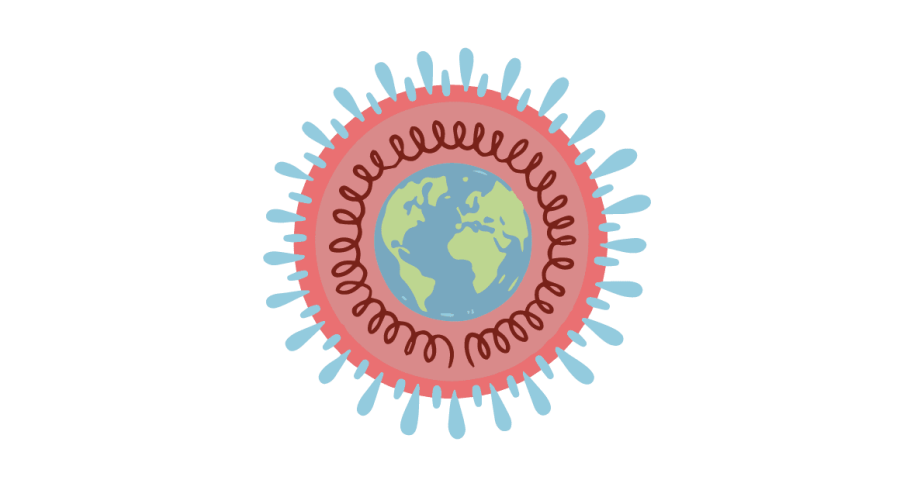Social Media during Covid-19 Era: What are its Impacts on Teenagers?
Created by Philippa Steinberg for the IGI.
Free COVID-19 illustrations, SARS-CoV-2 virus and world
Deep into the Covid-19 quarantine of 2020, everyone faced new and unexpected challenges like running out of toilet paper, transitioning to online school and work, and of course, being in fear of catching the virus. Social media took a prominent role in all those issues.
Filling the void of in-person connections and as a source for communication and current news, social media usage inevitably increased at the peak of the pandemic. Threaded into all of the chaos and uncertainty, social media became associated with increasing levels of depression, anxiety, and hopelessness in young people.
According to Mayfield Senior School’s student survey on social media, more than half of the students (54.9%) said that their perspective of social media changed negatively during isolation.
“I imagine that the sheer increase in time that we all spent online during social isolation brought up negative perspectives,” Mayfield Senior’s school counselor, Erika Mastrobuono, said. Increased time on social media was our only way to interact during social isolation, but it was “often a poor substitute for actual human connection,” said Mastrobuono.
Social media was an escape from the surreal and life threatening issues the world was, and still is, facing. Platforms such as Instagram, Snapchat, and TikTok allow users to communicate with friends, family and even strangers. Memes, videos, posts, and comments are often used as an outlet to express burdening hardships. With these interactions came loss of sleep and worse.
“I have seen an increase in anxiety and depression. I have seen girls increase their comparison, and also increase the use of filters and ‘perfect posts’ of their highlights because they had so much more time.” said Mastrobuono who sees clients inside and outside of Mayfield Senior.
Unrealistic pictures, filters, videos, and ads we see on social media lead young girls to place unreasonable expectations on themselves to look a certain way and live a certain lifestyle.
Struggles with body image are not the only instances where social media has caused a decrease in the state of mental health. A Wiley Public Health Emergency Collection study released during the early stages of Covid-19 showed that “results from regression analyses indicated that a higher level of social media use was associated with worse mental health.”
Active social media user and Mayfield Senior student Francesca Difronzo ’24 explained that “Looking at social media during quarantine led me to think my life was falling apart when everyone else’s was flawless.”
Reflecting back on social media during the isolated and uncertain times, DiFronzo said was able to gain “a better understanding about what impact social media had on me,” DiFronzo said. “I honestly think I have grown to learn to not compare my life to the lives of others, because we are all completely and beautifully different.”
Ella Klingerman ’24 had a similar experience with social media during the time of Covid. “For most people scrolling through their social media feed, seeing other people doing fun things makes them sad or depressed that they cannot do that, but for me it was always different, ” Klingerman said.
During the time by herself while the virus was roaring, Klingerman said she began to think about her future in regards to career options and college decisions.
“I started to see some of my role models doing things and wearing things I loved which influenced me to start looking more into clothing I liked,” Klingerman said. “I also was watching videos of people doing their jobs in the fashion industry which interested me and ultimately gave me an idea of what I want to study in college.”
With our country gradually returning to normal, many young people have adapted to the habit of constantly relying on social media due to the pandemic and advancement of new technologies.
##


